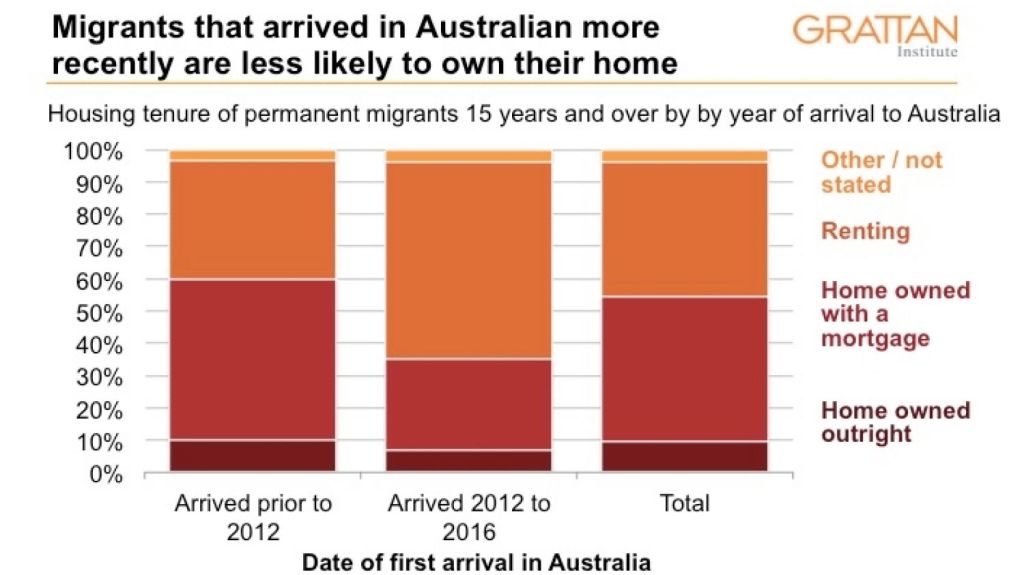How will border closures impact the property market?
Despite falling migration levels, property prices might not be impacted as much as investors think, an industry expert has explained.

In a conversation with Smart Property Investment, InvestorKit’s head of research, Arjun Paliwal, explained why the border closures are unlikely to broadly have an immediate impact on property prices, merely rents in the short term.
“More than two-thirds of migrants that came in from 2019 were temporary residents in the form of students, visitors and working holiday.
“Now if we look at migration, yes there’s a falloff of 200,000 people plus net migration from 2019-2020, but more than two in three people that come are renters,” Mr Paliwal explained.
CoreLogic’s data reaffirms Mr Paliwal’s position, with head of research Tim Lawless stating it is reasonable to assume the large majority of temporary migrants will not be purchasing a home in Australia. Instead, they rent.
“Additionally, it seems most permanent migrants will initially rent. Previous research from the Australian Treasury showed approximately 85 per cent of recent skilled migrants were renters and around 80 percent of those arriving on humanitarian grounds rented.
“The same research showed almost 90 per cent of temporary skilled worker visa arrivals rented or lived in employer-provided housing. Intuitively, the longer the migrant has lived in Australia, the more likely they will be seeking to purchase a home.”
The trend dates back over 15 years, with the Grattan Institute’s research showing migrants who come to Australia are far more likely to rent than they are to buy.

Indirect impacts
While the number of migrants entering the country shouldn’t have a major impact on the prices in the housing market, Mr Paliwal said secondary impacts are likely to impact the sector.
“The biggest impact on housing prices are going to be indirect impacts that flow on from lack of confidence in certain property types and areas that are used to rent and house those migrants coming in,” Mr Paliwal said.
The researcher explained that this will indirectly change buyers’ confidence and sentiment towards property, specifically those who were impacted by the rental loss.
“To give you an example: why have our major CBDs and university precinct and high-density housing massively increased in rental issues, massively increased in vacancy rates?
“Because we are completing more or have more available without the same demand from people coming into the country.
“That is where we will have issues in the rental market for those assets. So, indirectly that impacts prices. People are reducing their rent by $40-60 a week and then they decide on their confidence on holding these assets in their portfolio.
“Some sell for cheaper to a first home buyer who wants to live in an apartment in a certain location and gets a great deal. Some people have a drag on their sentiment and are willing to let it go later on,” Mr Paliwal said.
Home builders impact
Mr Paliwal points to a third impact that closing the borders might have on the housing market.
While again explaining it will not impact the house prices directly, Mr Paliwal explained how it could impact the rental market.
“Where the impact will further come is more organic and the organic impact is that home buyers are continuing to build,” Mr Paliwal said.
“As they build and they go out, they are vacating the rental market. With a grant or something like that, the actual demand flowing in is not going to be showing for that rental pocket because migrants that do come in and rents are not replacing that pool. However, I expect this indirect impact to be miniscule."
“Certain rental markets are feeling it already and will feel it more the longer the border closure happens and the more construction projects that were approved one to two years ago continue to be completed,” Mr Paliwal said.
Mr Paliwal noted that investors might not feel this impact immediately, but it is likely to influence the market moving forward.
“The indirect price impact is a can that we won’t feel now but kicked down further,” Mr Paliwal said.
“The can will be kicked down the road twice. One over the next 12-24 months in rental markets that directly rely on migration, which will continue to be impacted.
“Two is 30-35 per cent of migrants that came in 2011-2012 had purchased by 2018. Then some housing demand over the next five years is not likely to be there as a result of the buyers not coming in now. However, this may not be felt at all due to the potential of pent up migration demand.” Mr Paliwal said.
Finally, Mr Paliwal pointed out that supply will lag in the future due to this falling demand, which means buyers over the medium term might not be impacted as severely as currently thought.
“There has already been a reduction in building approvals, and it may be further tested. As migration opens up, there is a lag in supply, which can create a wave of price increases and/or minimal price impact.
“In the short term on the way to this supply lag, construction jobs are likely to be impacted as a result once the current pipeline diminishes, the new pipeline won’t be as strong.
“So, yes, short-term pain. But the medium term result is with the population not coming in the same way and new supply not coming in the pipeline, it creates another low supply high price pressure moment when demand does come in again.
“The migrant loss from those 30-35 per cent of buyers might already be neutralised with far less building approvals, as there is going to be low confidence for investors to build skyscrapers while so many are sitting empty and bank valuations start changing,” Mr Paliwal concluded.
